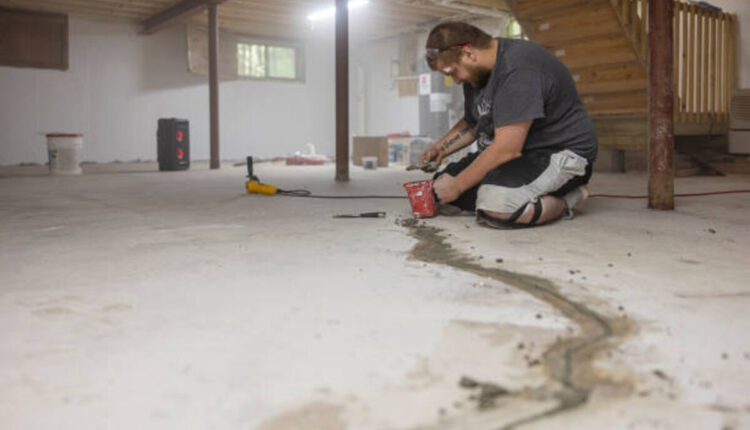Polyurethane sealants have become an integral part of contemporary construction, offering unparalleled flexibility, durability, and resilience. These sealants are used in a wide range of applications, from sealing joints in buildings to bonding materials in infrastructure projects. As urban landscapes evolve, especially in cities like Sydney, polyurethane sealants play a crucial role in ensuring structural integrity and long-term performance.
What Is Polyurethane Sealant?
Polyurethane sealant is a synthetic compound known for its superior adhesive and sealing properties. It is widely used in construction due to its ability to form a robust, elastic, and watertight bond between various materials, such as concrete, metal, wood, and glass. Unlike silicone sealants, polyurethane sealants offer greater tensile strength and are better suited for applications requiring resistance to wear and tear.
Key Features of Polyurethane Sealants
- Flexibility and Elasticity: Polyurethane sealants can withstand significant expansion and contraction, making them ideal for use in dynamic joints that experience movement due to temperature fluctuations or mechanical stress.
- Durability: These sealants resist environmental factors such as UV rays, moisture, and chemicals, ensuring longevity even in harsh conditions.
- Adhesion: Polyurethane sealants adhere strongly to a variety of substrates, providing a reliable and permanent seal.
- Versatility: They are suitable for both indoor and outdoor applications, from sealing windows and doors to waterproofing roofs and basements.
Applications in Construction
Polyurethane sealants are indispensable across various construction sectors. Below are some of their primary applications:
- Joint Sealing: They are commonly used to seal expansion and control joints in concrete structures. This prevents water ingress and accommodates movement caused by temperature changes or ground settling.
- Facade Sealing: Polyurethane sealants are ideal for sealing gaps in building facades, ensuring energy efficiency and weather resistance.
- Roofing and Waterproofing: These sealants provide a durable and flexible layer of protection for roofs, preventing leaks and minimizing maintenance.
- Adhesion and Bonding: Beyond sealing, polyurethane sealants also serve as adhesives in structural glazing and panel installation, contributing to the stability of modern architectural designs.
Examples of Polyurethane Sealing in Sydney
In a city like Sydney, where construction must contend with coastal conditions and a diverse climate, polyurethane sealants have proven invaluable. The Sydney Opera House, an iconic symbol of Australia, is an excellent example of how durable materials are vital to maintaining structural integrity. While the Opera House was constructed long before polyurethane sealants became mainstream, contemporary projects in the city heavily rely on these sealants to combat environmental challenges, such as humidity and salt exposure from the harbor.
For instance, the Barangaroo Development, a recent addition to Sydney’s skyline, utilized polyurethane sealants extensively in its construction. These sealants were crucial for sealing joints in high-rise buildings and ensuring the waterproofing of underground car parks. The flexibility of polyurethane sealants also allowed for smooth integration with sustainable building practices, such as green roofs and energy-efficient facades.
Environmental Considerations
As the construction industry places greater emphasis on sustainability, the use of polyurethane sealants has adapted to meet these demands. Many manufacturers now produce eco-friendly versions of these sealants with reduced volatile organic compounds (VOCs). These environmentally conscious products align with green building certifications, such as Green Star, which is widely recognized in Australia.
In Sydney, the growing trend towards sustainable urban development further highlights the importance of such innovations. By choosing low-VOC polyurethane sealants, builders can achieve high-performance results without compromising environmental standards.
Choosing the Right Polyurethane Sealant
Selecting the appropriate polyurethane sealant depends on the specific requirements of a project. Factors to consider include:
- Movement Capability: Projects with significant joint movement require sealants with high elasticity.
- Substrate Compatibility: Ensure the sealant adheres well to the materials used in the construction.
- Weather Resistance: For outdoor applications, opt for UV-resistant sealants designed to withstand prolonged exposure to sunlight.
- Application Conditions: Some sealants cure better under specific temperature and humidity conditions.
Installation and Maintenance
Proper application is essential to maximize the performance of polyurethane sealants. Surface preparation is a critical first step; substrates must be clean, dry, and free of contaminants. Professional applicators often use primers to enhance adhesion, especially on porous surfaces.
Once applied, polyurethane sealants require a curing period, during which they transition from a paste to a rubber-like solid. The curing process can take anywhere from 24 hours to several days, depending on the product and environmental conditions.
Regular maintenance is also crucial for long-term performance. Inspections should be conducted periodically to identify any signs of wear or degradation. Timely repairs or reapplication can prevent minor issues from escalating into significant problems.
The Future of PolyurethaneeSealants
Polyurethane sealants have revolutionized the construction industry with their versatility, durability, and resilience. From sealing joints in skyscrapers to waterproofing homes, their applications are vast and varied. In a city like Sydney, where architectural innovation meets environmental challenges, polyurethane sealants are indispensable for creating structures that stand the test of time.
As sustainability continues to shape the future of construction, the evolution of polyurethane sealants ensures they remain a cornerstone of modern building practices. Whether you’re embarking on a residential renovation or a large-scale commercial project, polyurethane sealants offer a reliable solution for achieving durable and high-performance results.
Read also: Why Patios Are Better with Professional Concrete Installation

